April 16–June 16 2018
Harrison Gallery
Arcadia University’s Art Research Collaboration (ARC) Exhibition Program is pleased to present “Abbey Ryan: The Light / The Shade,” an exhibition of recent paintings on display from April 16 through June 16, 2018 in the Harrison Gallery on the first level of the University Commons.
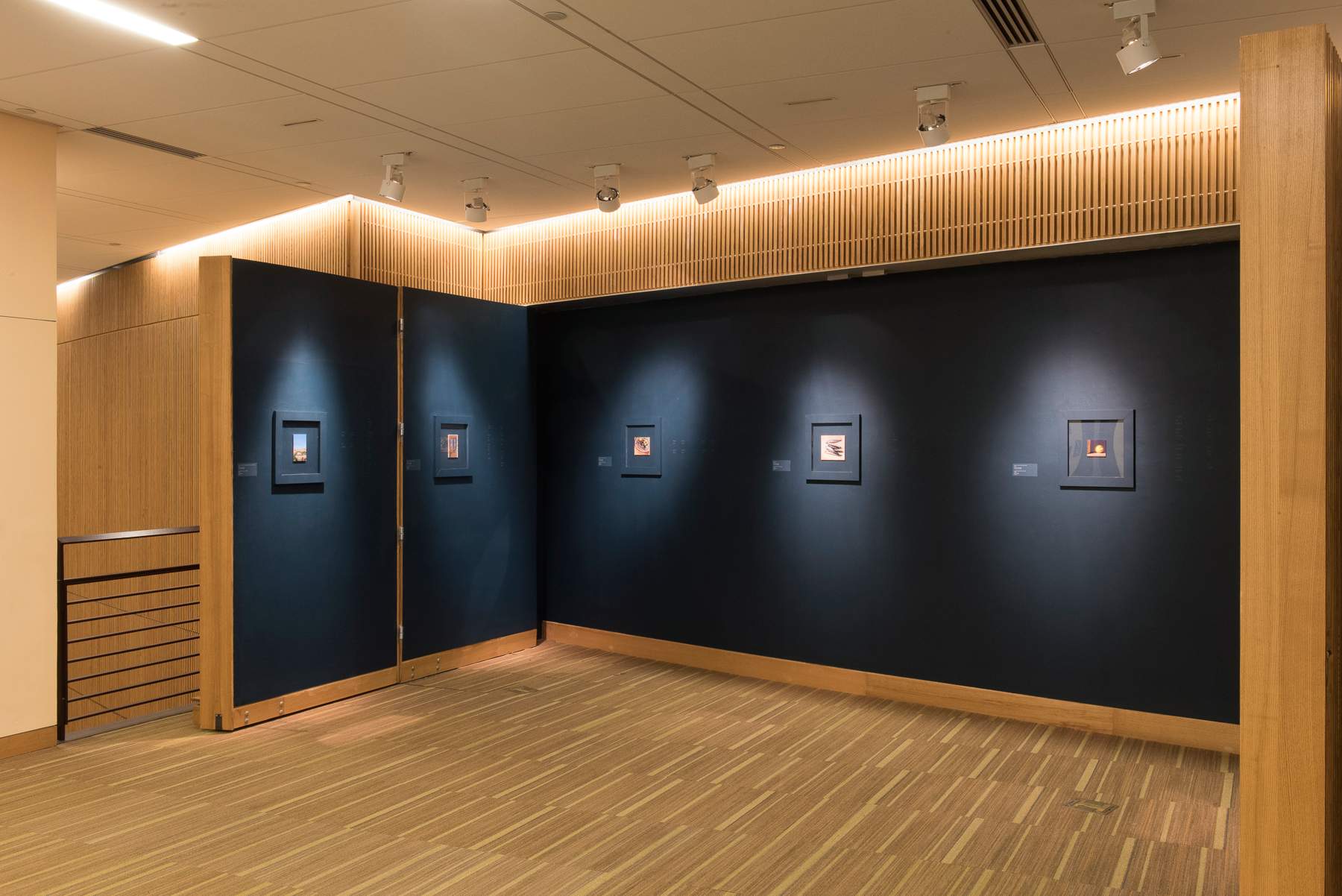
Installation view, "Abbey Ryan: The Light / The Shade", Harrison Gallery, photo: Sam Fritch
For Ryan, an associate professor at Arcadia and 2003 alumna of the University, this exhibition of 15 landscapes and still lifes rendered in oil on small linen panels represents the culmination of her research and related excursion to the Greek island of Patmos undertaken as Arcadia’s first recipient of the Dr. Norman Johnston Faculty Fellowship in the Humanities and Social Sciences awarded by Arcadia University.
Begun in 2012, “The Light / The Shade” is a series of works in which Ryan uses techniques of classically illuminated still life painting, such as chiaroscuro, and the Dutch Golden Age practice of depicting common household scenes to convey deeper meaning. Together, these express the visual states of light and dark as opposing psychological conditions, either of which can carry positive or negative connotations. These techniques are on display in the painting kastelli view of skala, midday (the light / the shade) (2017) in which Ryan has framed the small port village within the confines of a rustic window. Though the charm of the distant, quintessentially Greek structures with pure white walls and intense blue and orange roofs is viscerally present in the work, the darkness of the window decidedly separates the viewer from it.
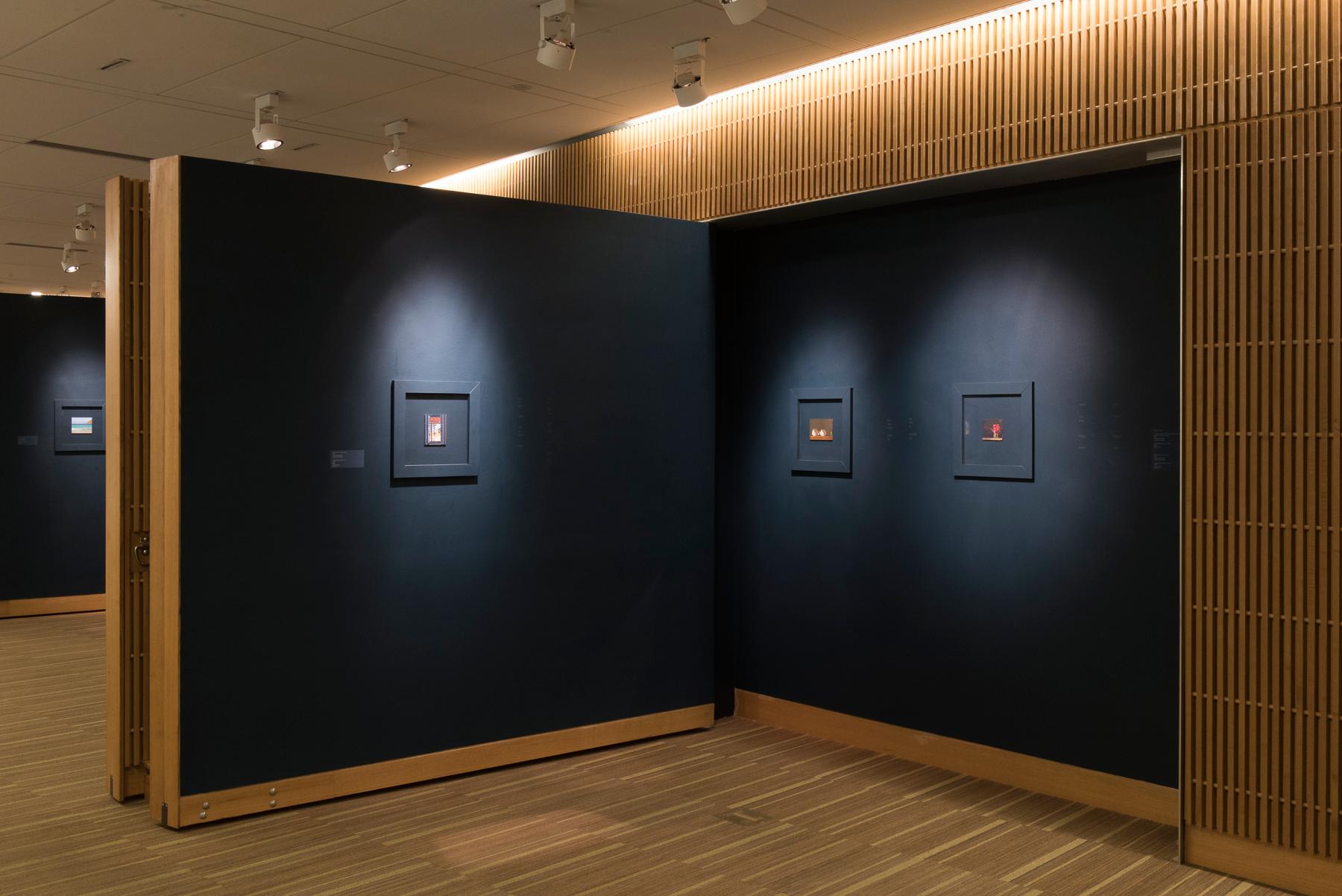
Installation view, "Abbey Ryan: The Light / The Shade", Harrison Gallery, photo: Sam Fritch
The Dr. Norman Johnston Faculty Fellowship was endowed by the estate of the long-time Beaver College / Arcadia professor to encourage talented and dedicated faculty members to excel in research and scholarship in the humanities and social sciences and to share their scholarship with the University community. The fellowship promotes the values of Professor Emeritus Norman Johnston, who understood the central role of faculty in the education process, the open exchange of ideas, and the engagement of the entire University community.
In June 2017 Ryan utilized the fellowship’s resources to travel to Patmos, a 13-square-mile Greek island off the Aegean coast of Turkey. The primary impetus for Ryan’s journey was that this remote, harsh destination served as the longtime home of the American poet Robert Lax (1915-2000), whose influential but under-recognized minimalist poetry inspired Ryan’s ongoing “The Light / The Shade” series.
The author Jack Kerouac referred to Lax as “one of the great original voices of our time.” In regard to Lax’s writing style, author and critic Richard Kostelanetz wrote in The New York Times Book Review in 1978 that Lax was “a true minimalist who can weave awesome poems from remarkably few words.”
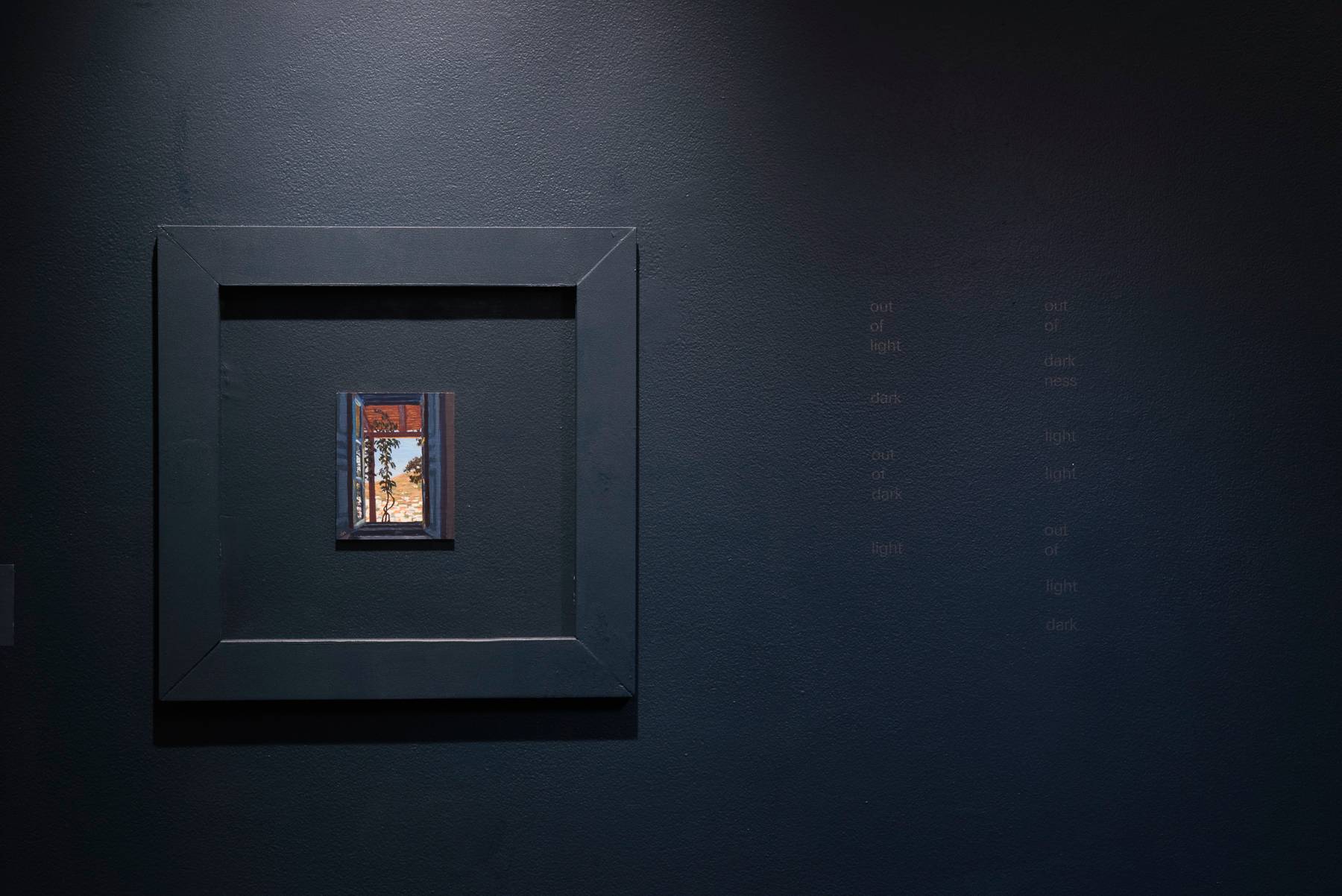
Installation view, "Abbey Ryan: The Light / The Shade", Harrison Gallery, photo: Sam Fritch
Lax’s choice of a simplistic lifestyle left little room for self-promotion, resulting in literary legend having labeled him a recluse. However, the reality of his life is far more interesting. According to the artist Nancy Goldring, who met Lax on Patmos in 1978, “Many called him ‘the hermit’—but that wasn’t remotely true. There was always a steady stream of visitors. All the surfaces of his little house were covered with piles of letters. His was a rich and complicated life.” It is this seeming paradox in Lax’s life and character which, in part, fueled Ryan’s interest in experiencing Patmos for herself.
In addition to his poetry serving as the creative inspiration for Ryan’s “the light / the shade” series, her connection to Lax is also a personal one. As it happens, a number of the letters Goldring describes in Lax’s humble quarters originated from Ryan’s father. Lax was a close friend of abstract painter Ad Reinhardt (1913-1967) and Thomas Merton (1915-1968), the noted Trappist monk, writer, and social activist. Ryan’s father is a Thomas Merton scholar, (not coincidentally Ryan’s middle name is Merton), who began a correspondence with Lax after Merton’s passing. Ryan says, “Through my childhood, Bob Lax was like family. I have a cigar box full of letters from Lax to my father (my dad’s letters to Lax are in the Robert Lax Archives at St. Bonaventure University). Sometimes Lax referred to himself as my and my sister’s ‘Greek Grampa’ and he had many of my childhood drawings. A Lax biography notes that his walls were covered with postcards, children’s drawings, photographs and quotes from friends or saints or writers he admired. In one of his many published journals, Lax lists what’s on his wall, including ‘greg ryans two girls picketing for peace’—reference to a photo of us little girls at a peace protest organized by my dad. It was in my mid 20s that I took up a study of Lax’s work in relation to my own creative practice and shared interest in capturing the world around me and inside me as simply as I could.”
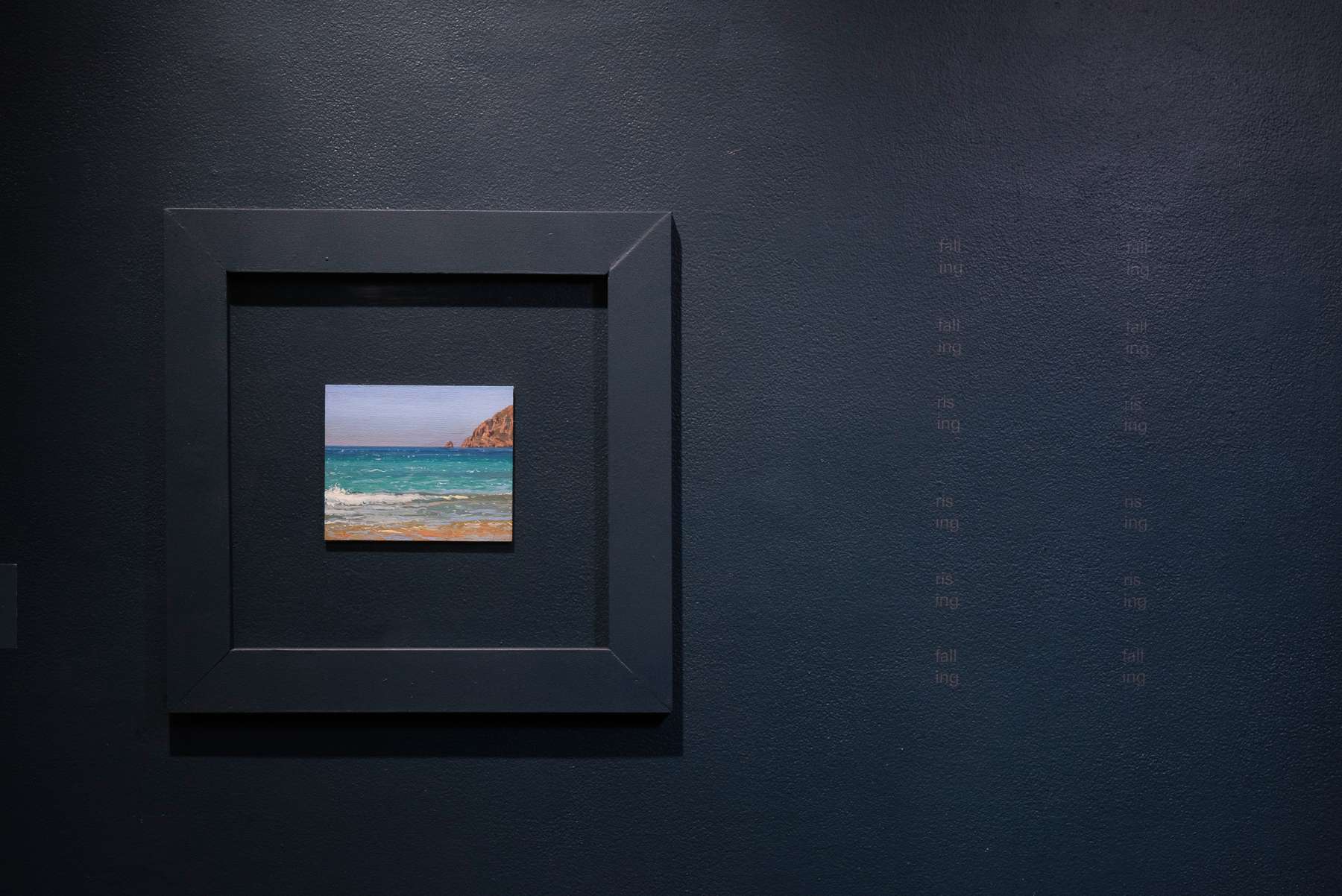
Installation view, "Abbey Ryan: The Light / The Shade", Harrison Gallery, photo: Sam Fritch
According to Ryan, “Until his death in 2000, Lax lived a purposefully simple, mindful, and inspired life on Patmos. Patmos is thought by some to be one of the oldest penal colonies in the Roman Empire, then known for its harsh conditions due to a lack of shade. According to tradition, Patmos is where John the Apostle was banished for prophesying that was deemed superstitious and it is believed that John received the Book of Revelation in a Patmos cave known today as the Cave of the Apocalypse. Today with four monasteries, Patmos is a place known for its encouragement of monastic life.”
While on the island Ryan lived in Lax’s former neighborhood, enabling her to witness the same terrain, ephemera, and unique qualities of light which undoubtedly influenced Lax’s writing. She documented these landscapes and native objects as part of her daily painting practice which combines elements of classic still life traditions with an efficient, expressive gesture. During her trip she also spent time in the Cave of the Apocalypse, a noted destination for Christian pilgrimage. Ryan says, “On Patmos, the light is the most pure I’ve ever seen. By foot the terrain and sun are challenging and after walking over a mile uphill towards Chora (the island’s capital) I found the sacred cave. The entrance was dark, and once my eyes adjusted I saw that I was alone. In silence, I took in the cave and the brilliant view. It is difficult for me to describe with words how the paradox of light and dark there is so different from anything I’ve seen, but the Book of Revelation describes a ‘sea of glass, mingled with fire.’ After twenty minutes of uninterrupted time, I made my way out of the cave as a huge crowd of tourists poured in.” In addition to John’s association with the island serving as inspiration for Lax’s initial move there, the site’s historic association to both imprisonment and spiritual isolation was an important subject for the research of Dr. Norman Johnston.
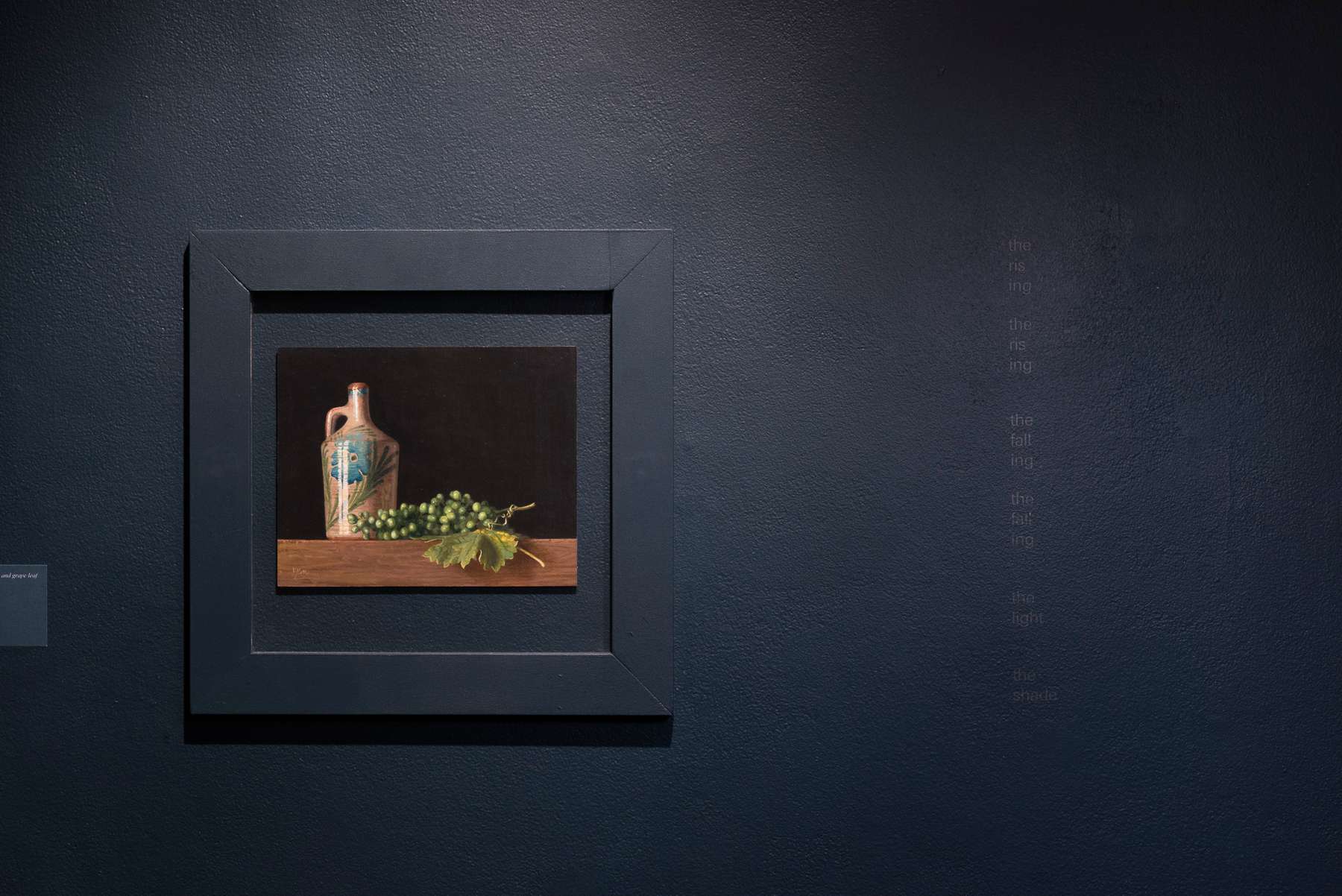
Installation view, "Abbey Ryan: The Light / The Shade", Harrison Gallery, photo: Sam Fritch
Executed either during Ryan’s travels, or inspired by her related research, this collection of landscapes and still lifes of fruit, fish, windows, doors, and eyeglasses will be presented alongside passages from Lax’s book-length poem the light / the shade (1989). Specific excerpts, recreated in grey text utilizing the book’s exact typographic format, will be adhered to the deep blue wall beside each painting, further establishing for the viewer the strong connection between Lax’s poetry and Ryan’s paintings.
“Abbey Ryan: The Light / The Shade” is scheduled to travel to the Regina A. Quick Center for the Arts on the campus of St. Bonaventure University, New York. The exhibition will be on view throughout the spring 2019 semester.
Gallery Talk
April 19, 2018
Ryan will be available in the Harrison Gallery beginning at 4:00 PM to discuss her exhibition and to answer questions. A reception with light refreshment will follow immediately afterward. Both events are free and open to the public.
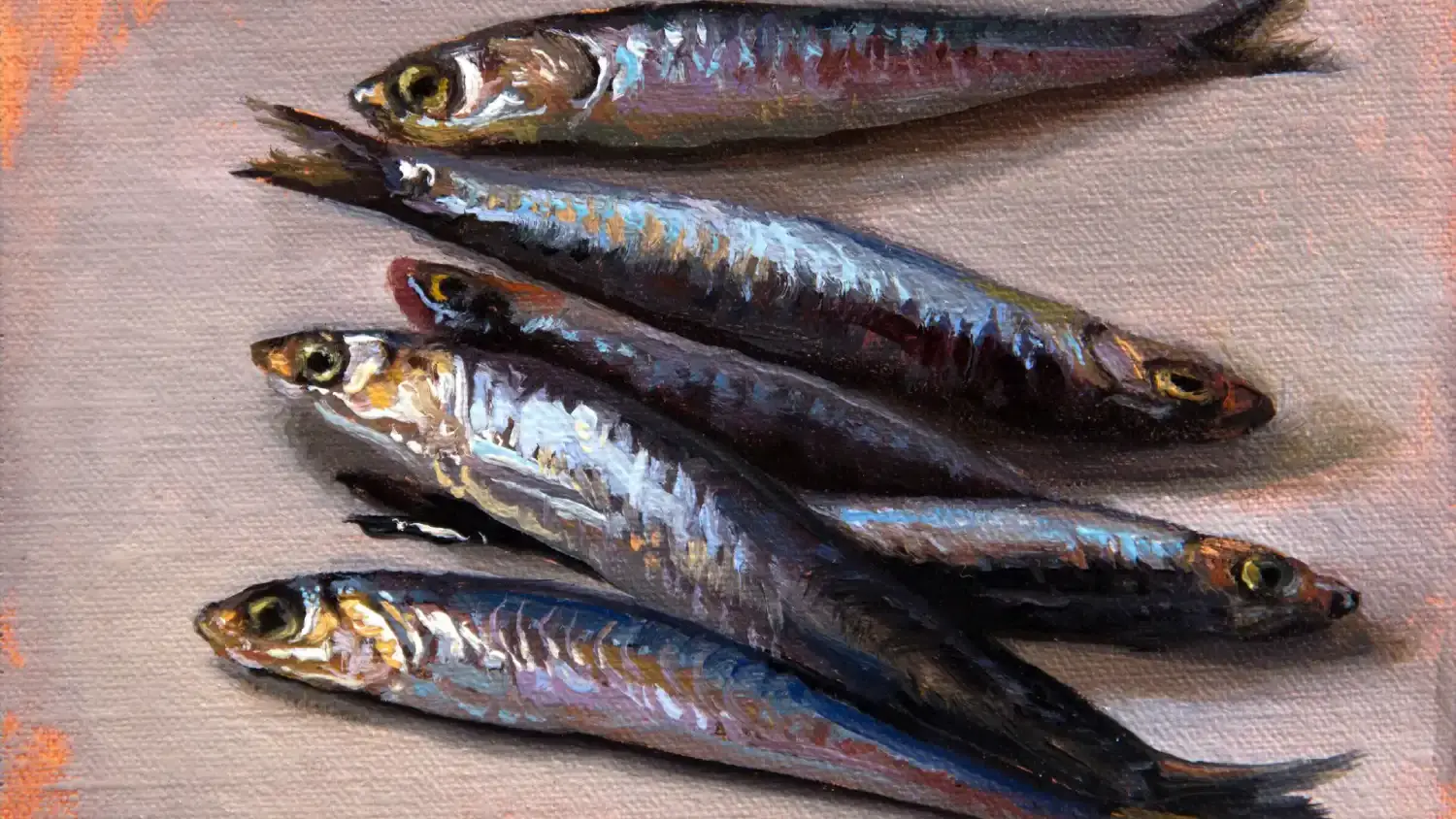
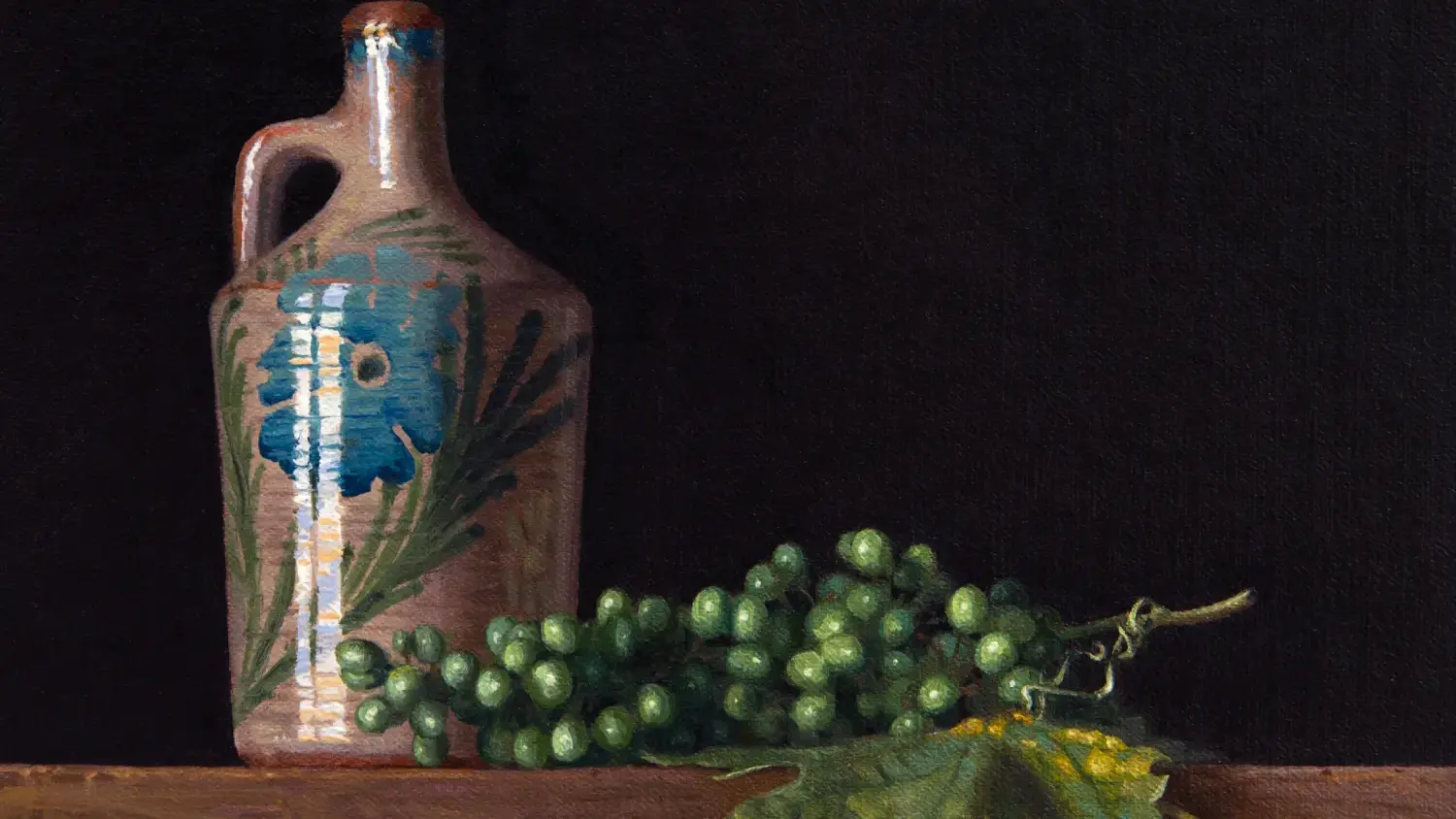
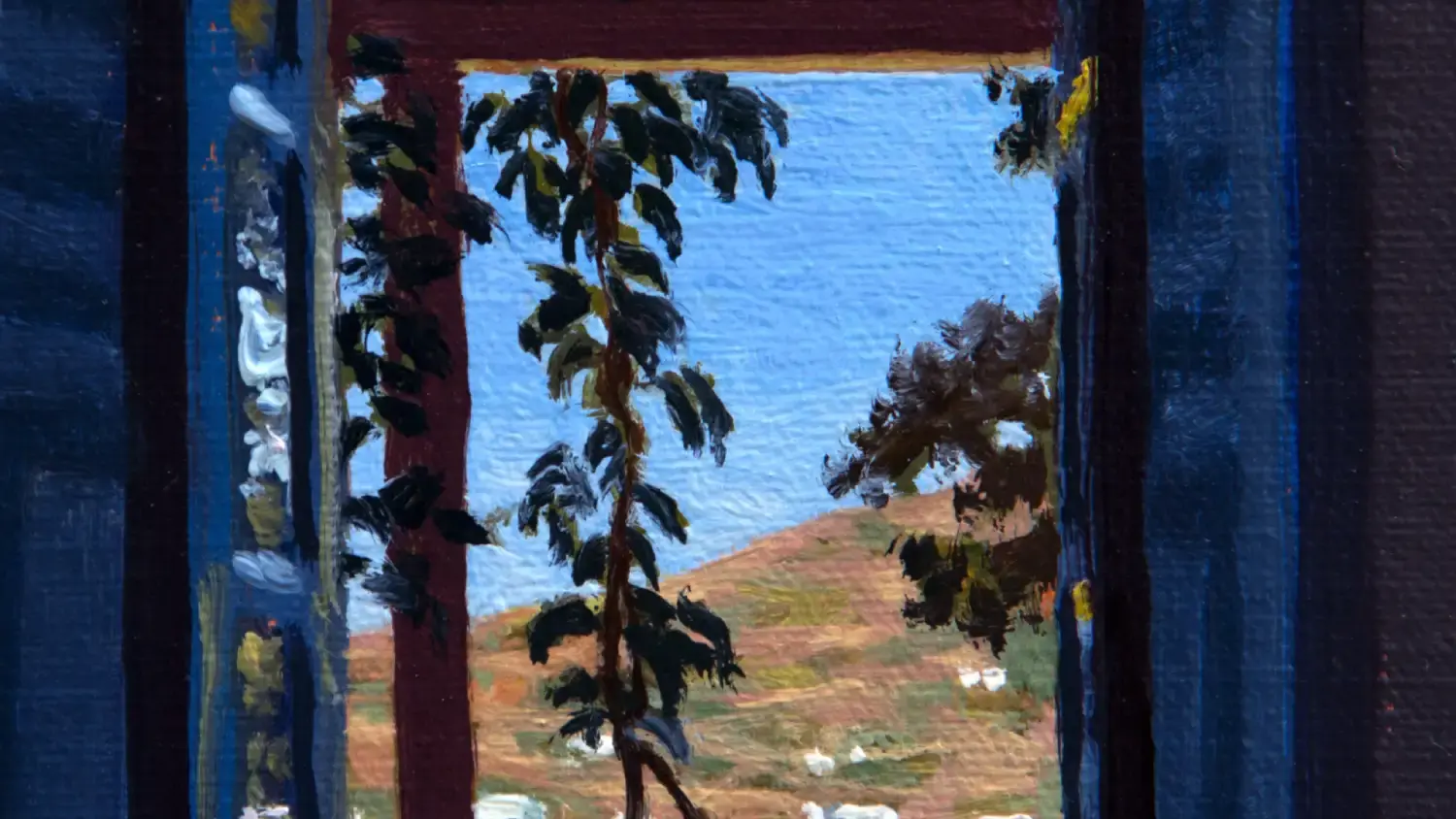



Fresh Gavros (The Light / The Shade), 2017,
oil on linen on panel,
6” x 7”
Courtesy of the artist
Still Life with Greek Bottle, Hand-picked Grapes and Grape Leaf (The Light / The Shade), 2017
oil on linen on panel
8” x 10”
Courtesy of the artist
Kastelli View of Skala, Midday (The Light / The Shade), 2017
oil on linen on panel
5” x 4”
Courtesy of the artist
Fresh Gavros (The Light / The Shade), 2017,
oil on linen on panel,
6” x 7”
Courtesy of the artist
Still Life with Greek Bottle, Hand-picked Grapes and Grape Leaf (The Light / The Shade), 2017
oil on linen on panel
8” x 10”
Courtesy of the artist
Kastelli View of Skala, Midday (The Light / The Shade), 2017
oil on linen on panel
5” x 4”
Courtesy of the artist

